11 Types of Black Birds in Alaska (With Pictures)
Last Updated on
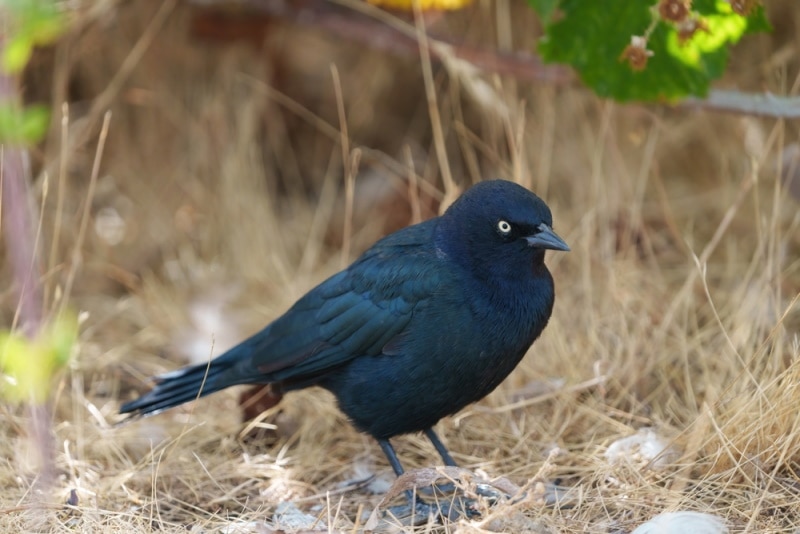
You’re more likely to encounter sea or wading birds in Alaska than terrestrial species like blackbirds. That’s not surprising given that it has the most miles of shoreline in the lower 48 states at over 46,600 miles, according to the National Oceanic and Atmospheric Administration (NOAA). Bear in mind that its average low temperature is -8.3℉ in January.
We used the University of Alaska1’s classification schemes for the occurrence of these species. Casual visitors don’t follow a regular pattern. Instead, their journeys into the state are sporadic but often follow seasonal variations. Accidental sightings are documented but don’t occur with any regularity. Birdwatchers and scientists record them as part of Alaska’s natural history.

The 11 Types of Black Birds in Alaska
1. Bobolink (Dolichonyx oryzivorus)

| Size | 6–8 inches |
| Range | Eastern United States to Washington with a wintering range into the southern United States and into South America |
| Habitat | Prairies, agricultural fields, river bottomlands |
| Occurrence | Casual |
People sometimes call the Bobolink the tuxedo bird because of its seemingly reversed coloration. They prefer open landscapes such as you’d find in prairies and grasslands. If you don’t spot them right away, their song will soon reveal their presence. They’re not a common sight in Alaska, so it’s one you’ll want to go out of your way to see if it visits the Land of the Midnight Sun.
2. Brewer’s Blackbird (Euphagus cyanocephalus)
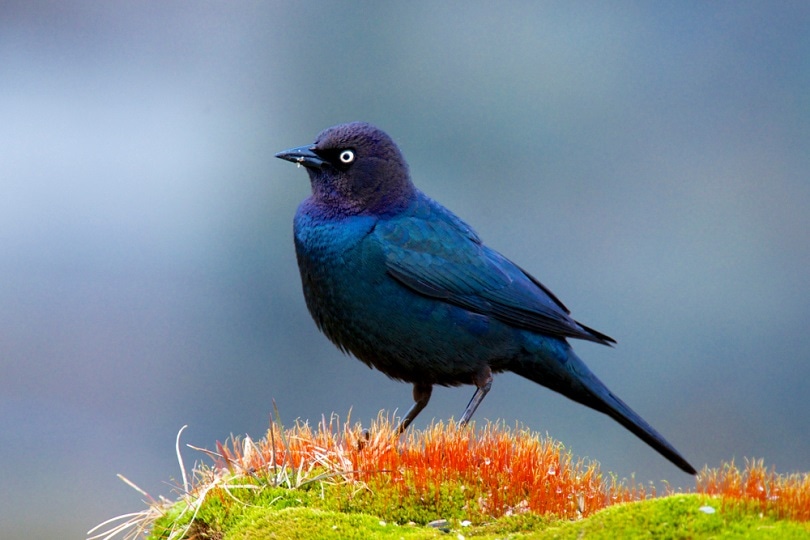
| Size | 8–9.8 inches |
| Range | West of Indiana, south into Mexico |
| Habitat | Shrublands, parks, riparian habitats |
| Occurrence | Casual |
The Brewer’s Blackbird is found across the United States, except east of Indiana. It’s only an occasional visitor in Alaska. It’s an active bird that’ll spend a lot of time foraging for seeds and the occasional insect or piece of fruit. It’s not a territorial bird, barring the breeding season when the female will vigorously defend her nest.
3. Brown-headed Cowbird (Molothrus ater)
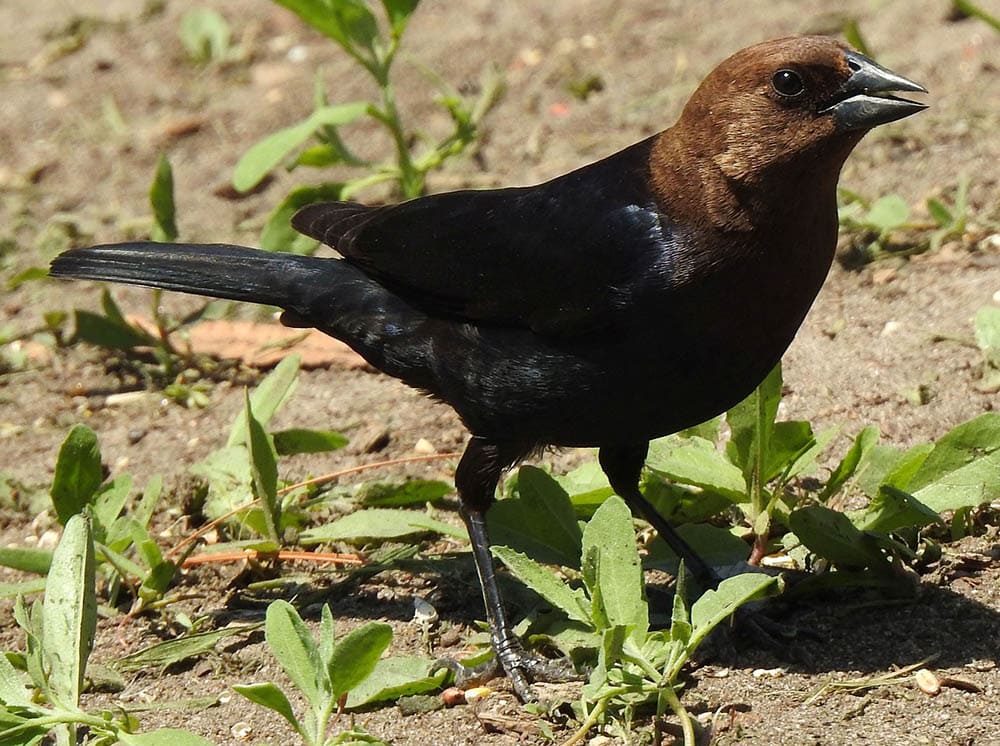
| Size | Up to 7 inches |
| Range | Across the entire lower 48 states into Canada |
| Habitat | Semi-open country, prairies, farm fields. |
| Occurrence | Rare |
The Brown-headed Cowbird has distinct coloration with its brown head and black body. It’s appropriately named for its closeness with bovines like cows. They feed primarily on seeds and insects. However, they’re perhaps best known as a brood parasite. They’ll lay their eggs in the nests of other birds, which end up raising their young.
4. Bullock’s Oriole (Icterus bullockii)

| Size | 7–8 .5 inches |
| Range | West of the Mississippi River, south into Mexico |
| Habitat | Open forest, habitat edges, wooded backyards |
| Occurrence | Casual |
The Bullock’s Oriole looks similar to the Baltimore Oriole, causing many to think it was the same bird. However, there are slight color and behavioral variations between the two species. The males and females look strikingly different, with the former having some orange plumage and the latter yellow. It’s a rare sighting in Alaska, with the last sighting in 2019.
5. Common Grackle (Quiscalus quiscula)

| Size | 11–13.5 inches |
| Range | Eastern half of the United States to Montana and into Canada |
| Habitat | Gardens, parks, agricultural fields |
| Occurrence | Casual |
The name of the Common Grackle is something of a misnomer. According to the International Union for Conservation of Nature and Natural Resources (IUCN), it is a near-threatened species. Its voracious appetite for seeds and grains has taken a toll on agricultural fields, making it a pest. It is also a carrier of histoplasmosis, a potentially fatal human respiratory disease.
6. Hooded Oriole (Icterus cucullatus)
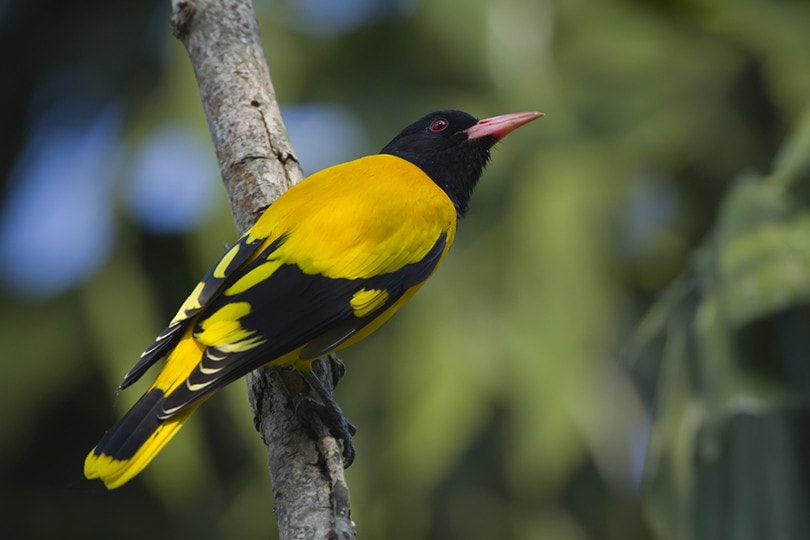
| Size | 7–8 inches |
| Range | Southwestern United States into Mexico |
| Habitat | Parks, dry forests, savannas |
| Occurrence | Accidental |
The unusual coloration of the Hooded Oriole makes it easy to identify. It has a black head and neck with an orange-yellow body with a dark-colored tail and wings. It lives in open areas where it feeds on fruit, nectar, and insects. The bird often hangs upside down as it forages in vegetation, infrequently feeding on the ground. It’s a very rare sighting in Alaska.
7. Orchard Oriole (Icterus spurius)
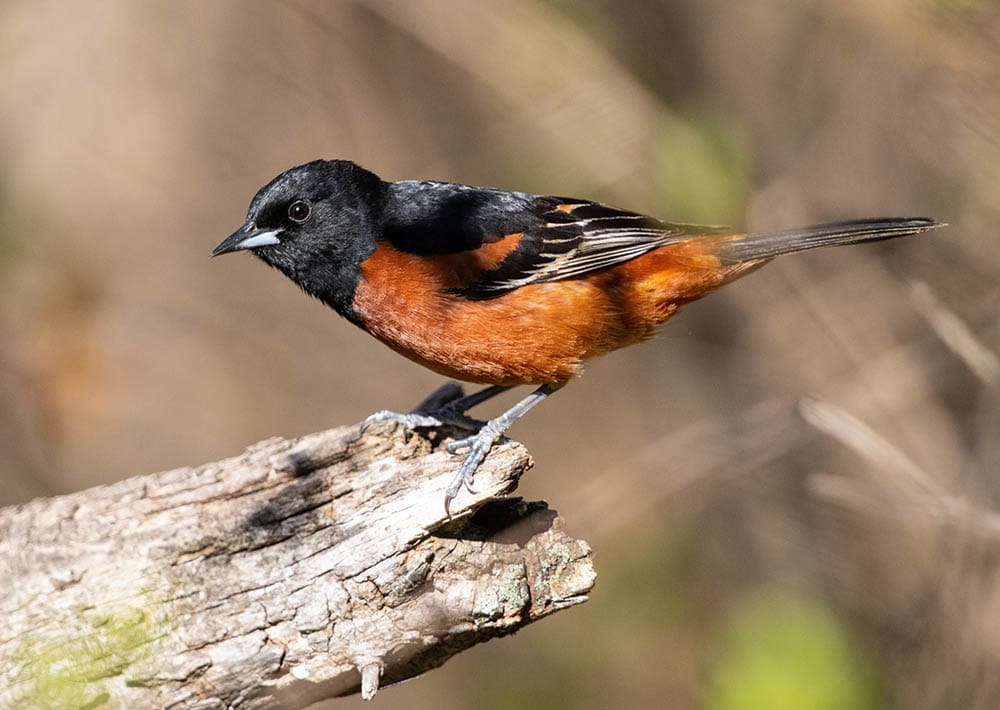
| Size | 6–7 inches |
| Range | Eastern half of the United States to Montana |
| Habitat | Wetlands, forest edges, agricultural lands |
| Occurrence | Accidental |
The Orchard Oriole is an extremely rare bird in Alaska, with the last sighting reported in 2002 in the Ketchikan Gateway. Otherwise, it’s abundant east of the Rockies. It prefers living near water, whether it’s a pond or wetlands. They are gregarious birds that get along with most other species. They feed primarily on insects but will also take seeds and fruits when available.
8. Red-winged Blackbird (Agelaius phoeniceus)
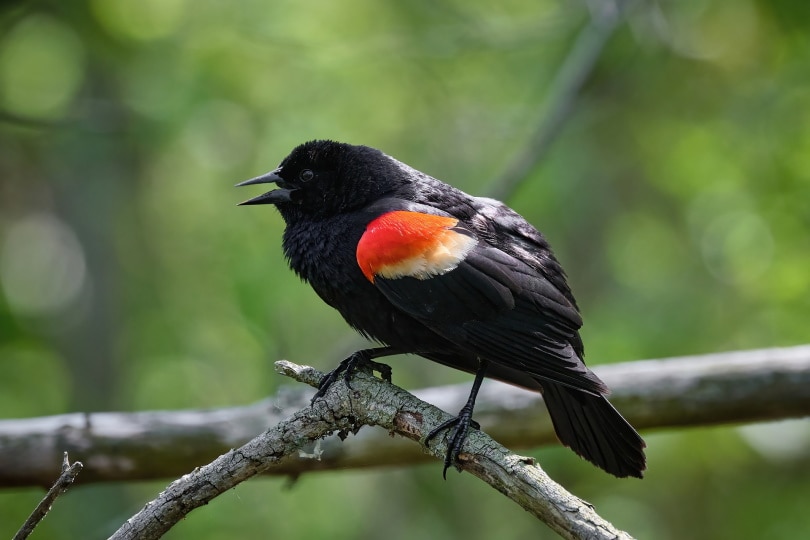
| Size | 7–9.5 inches |
| Range | Across the entire United States with a breeding range in Canada and Alaska |
| Habitat | Wetlands, open fields, deciduous forests |
| Occurrence | Common |
The Red-winged Blackbird is a widespread species with a breeding range that extends north into Alaska. It is a common bird in the state. It prefers open wetlands but is highly adaptable. The male is all black, except for its red epaulets. It’s a classic example of warning coloration in animals as a signal to others to stay away from its nest. The global population is an estimated 210 million birds.
9. Rusty Blackbird (Euphagus carolinus)
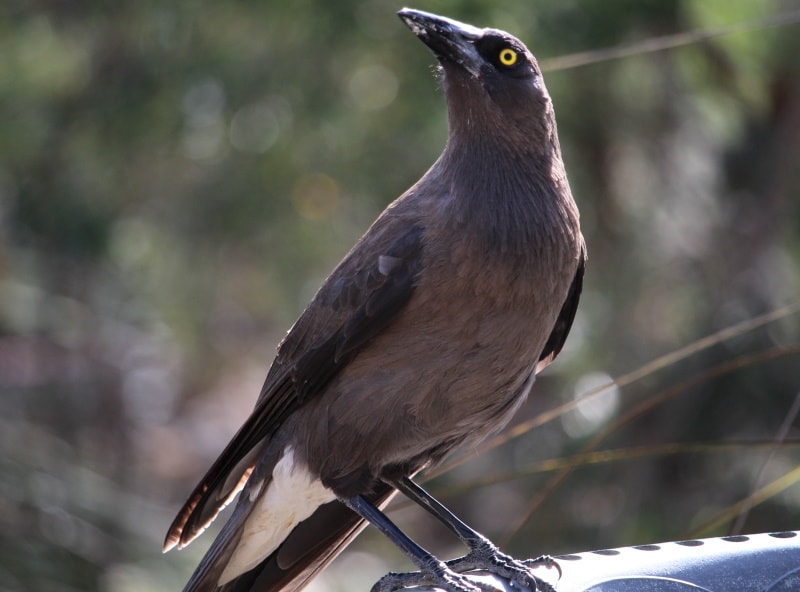
| Size | Up to 9 inches |
| Range | East of the Rockies, north into Canada, and west into Alaska |
| Habitat | Wetlands, bogs, mixed forests |
| Occurrence | Common |
The Rusty Blackbird is the only North American blackbird that breeds as far north as this species. Its range extends throughout Canada and includes most of Alaska. It’s an opportunistic feeder, taking what’s seasonally available. It’s a gregarious species, forming large flocks or clusters of blackbirds during migration and on its wintering grounds.
10. Western Meadowlark (Sturnella neglecta)
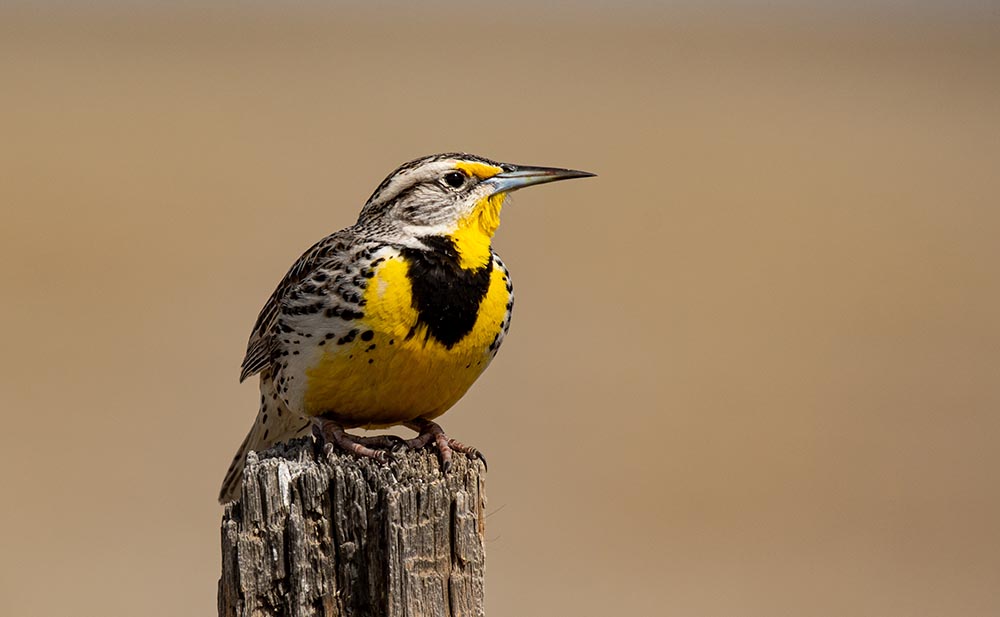
| Size | Up to 9 inches |
| Range | Western half of the United States to Illinois, north into Canada, and Alaska |
| Habitat | Open fields, farmlands, prairies |
| Occurrence | Casual |
The Western Meadowlark is a welcome sight in grasslands, with its beautiful song filling the air. It feeds primarily on insects and seeds. It pokes its large beak into the ground, searching for food. You’ll often see it walking around as it forages for what it can find. It’s not frequently seen in Alaska. However, its breeding range extends well into Canada.
11. Yellow-headed Blackbird (Xanthocephalus xanthocephalus)

| Size | 8–11 inches |
| Range | Central United States, north into Canada, and south into Mexico |
| Habitat | Freshwater wetlands, farm fields, pastures |
| Occurrence | Casual |
The Yellow-headed Blackbird is a species that you’ll know when you see it. Its bright yellow coloration stands out in the marshes and wetlands where it usually forages. Like others of its ilk, this bird is gregarious. If you see one, you will likely see many more in the same area. They are somewhat rare in Alaska, although they breed in nearby Canada.
Attracting Blackbirds to Your Yard
As you’ve seen, most blackbirds are only occasional visitors to the state. Since some are destructive, we suggest thinking carefully about whether you want to attract them. Most species will welcome feeders filled with cracked corn or sunflower seeds. You can also offer mealworms for the insect-eating blackbirds.
Bear in mind that some of these species, like the Brown-headed Cowbird, prey on other songbirds. Many birdwatchers would not purposely try to attract some of them. However, we understand the joy that people get from watching visitors to their feeders. We recommend cleaning it regularly to prevent disease. If you’re lucky, you’ll spot one of the rare blackbirds.

Final Thoughts
Blackbirds are an interesting family of birds. It’s hard not to marvel at their intelligence and adaptability. Their social behavior makes them fascinating to watch. Alaska may not have a lot of species visiting, but the ones that do make it worthwhile to pull out a pair of binoculars and try to find one to add to your life list.
See also:
- 9 Types of Black Birds In Oregon
- 10 Types of Black Birds in Texas
- 10 Types of Black Birds in Maryland
Featured Image Credit: 2009fotofriends, Shutterstock
Table of Contents
- The 11 Types of Black Birds in Alaska
- 1. Bobolink (Dolichonyx oryzivorus)
- 2. Brewer’s Blackbird (Euphagus cyanocephalus)
- 3. Brown-headed Cowbird (Molothrus ater)
- 4. Bullock’s Oriole (Icterus bullockii)
- 5. Common Grackle (Quiscalus quiscula)
- 6. Hooded Oriole (Icterus cucullatus)
- 7. Orchard Oriole (Icterus spurius)
- 8. Red-winged Blackbird (Agelaius phoeniceus)
- 9. Rusty Blackbird (Euphagus carolinus)
- 10. Western Meadowlark (Sturnella neglecta)
- 11. Yellow-headed Blackbird (Xanthocephalus xanthocephalus)
- Attracting Blackbirds to Your Yard
- Final Thoughts
About the Author Chris Dinesen Rogers
Chris has been writing since 2009 on a variety of topics. Her motto with all of her writing is “science-based writing nurtured by education and critical thinking.” Chris specializes in science topics and has a special love for health and environmental topics, and animals of all shapes and sizes.
Related Articles:
Monocular vs Telescope: Differences Explained (With Pictures)
10 Types of Hummingbirds in Arkansas (With Pictures)
8 Types of Hummingbirds in Nebraska (With Pictures)
5 Types of Hummingbirds in Idaho (With Pictures)
3 Types of Hummingbirds in Mississippi (With Pictures)
8 Types of Hummingbirds in Kansas (With Pictures)
5 Types of Hummingbirds in West Virginia (With Pictures)
5 Types of Hummingbirds in Ohio (With Pictures)
